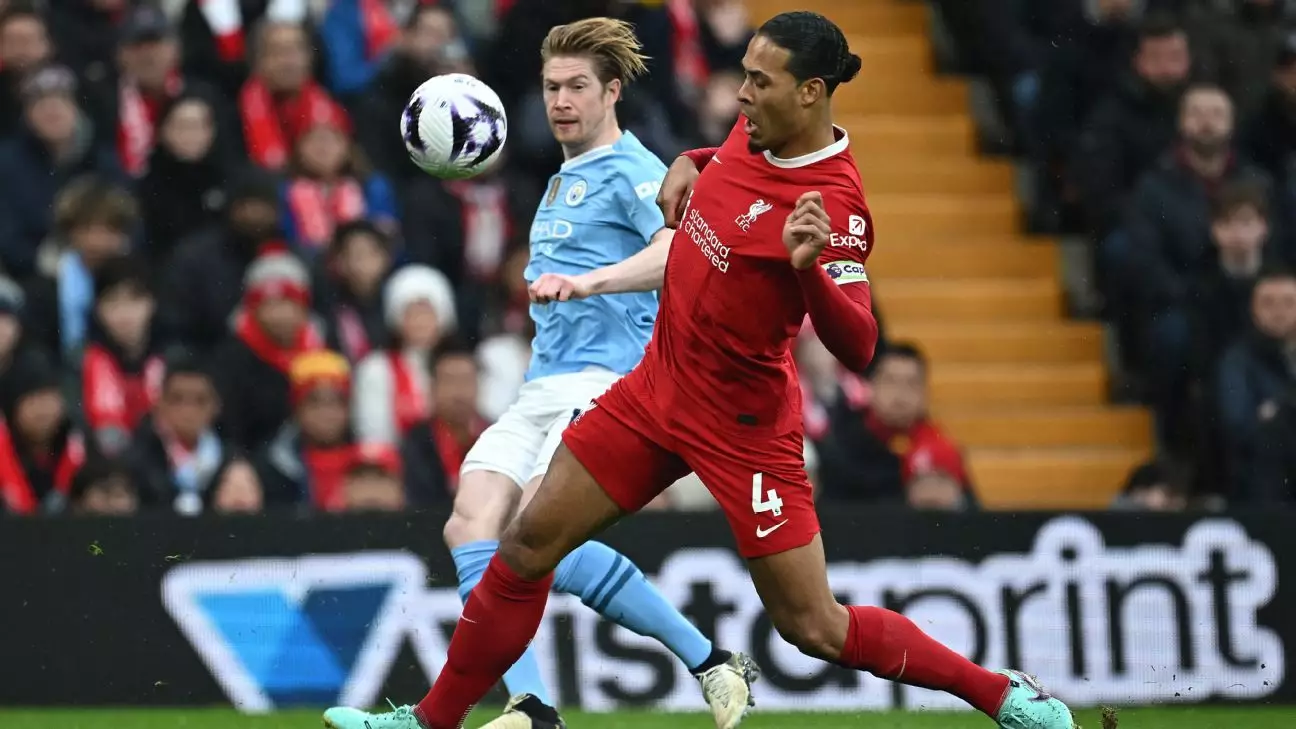The Premier League has witnessed extraordinary talent over the years, with a handful of players defining an era with their performances and contributions. Among these icons are Liverpool’s Mohamed Salah and Virgil van Dijk, alongside Manchester City’s Kevin De Bruyne. Their tenures have been marked not only by individual brilliance but also by significant trophy hauls, establishing their legacies as integral components of their respective clubs. However, approaching the twilight of their careers, uncertainty looms over their futures as they enter the final six months of their contracts.
Football is notoriously unforgiving, especially for those who have crossed the 30-year threshold. Salah, at 32, and Van Dijk, at 33, have yet to secure new contracts at Anfield, while De Bruyne shares a similar predicament at the Etihad. This situation extends to other notable players like Son Heung-Min of Tottenham, sparking a larger conversation regarding the challenges clubs face when dealing with aging superstars.
The core dilemma lies in balancing on-field performance with the financial implications of contract renewals. The players in question have been vital to the success of their teams, but clubs must also consider the long-term viability of retaining these players as they age. As a former Premier League sporting director elaborates, clubs must assess the depth of talent within their squad, the potential for finding suitable replacements, and the long-term fitness and performance trajectory of players.
For Salah and Van Dijk, their current performances are stellar. Salah is currently among the Premier League’s top scorers and has been crucial in Liverpool’s dominance in the league and Europe. On the other hand, Van Dijk has made a monumental comeback from injury, showcasing resilience and leadership. However, clubs are increasingly focused on the future potential of these players, realizing that the pressing question isn’t how well they are playing today, but whether they can sustain that level in the coming years.
Analyzing the injury records of these players is essential. For instance, Salah has missed relatively few games since joining Liverpool, yet recent muscle injuries raise questions about his longevity. Van Dijk’s history, despite earlier concerns, now shows he has returned to remarkable fitness levels since recovering from a significant injury. Contrastingly, De Bruyne’s record is less reassuring, as injury woes have plagued him recently, leading to speculation regarding the type and duration of any future deal he might receive.
As clubs weigh the merits of extending contracts, strategic decision-making becomes paramount. The risks of retaining aging players are juxtaposed against the long-term vision of squad development. Clubs like Manchester United and Arsenal have faced scrutiny over their decisions to release seasoned professionals, emphasizing the necessity of timely evaluations regarding a player’s fitness and contribution.
The contrasting fates of players like Ilkay Gündogan and Raphaël Varane bring this issue into sharp focus. Gündogan, once regarded as a cornerstone of Manchester City, was let go only to see his stock tumble with the challenges of aging. Meanwhile, Varane’s abrupt exit was motivated by injury concerns, only for him to suffer a career-threatening knee injury shortly after switching clubs. Clubs must not only assess individual performances but also understand how those players’ roles may evolve within the larger context of the team’s ambitions.
It’s crucial for both players and clubs to approach contract negotiations with pragmatism. For many players in their early 30s, the options in top-flight leagues become limited, particularly as financial landscapes shift towards lucrative offers overseas, especially in leagues like those in Saudi Arabia. The potential of a shorter contract with reduced pay may be appealing for players looking to maintain a stable lifestyle without sacrificing professional ambitions.
Equally vital is for clubs to acknowledge the importance of maintaining a cohesive team environment while navigating the complexities of aging contracts. The priority remains to avoid being shackled by high wages owed to underperforming veterans, presenting a situation that could stymie squad development.
Ultimately, the fate of players like Salah, Van Dijk, and De Bruyne rests not solely on individual performance metrics but on the broader strategic direction their clubs choose to pursue. Will clubs find the confidence to extend trust in their aging stars, or will the harsh realities of football demand a more ruthless approach?
Clubs face the constant balancing act of honoring their legends while simultaneously planning for future success. The decisions they make in the coming months will set the tone for their future, demonstrating the intricate dance between loyalty and necessity in the beautiful game. As the clock ticks down on these contracts, one question remains: can the clubs navigate this precarious landscape with the wisdom to know when to hold on and when to let go?

